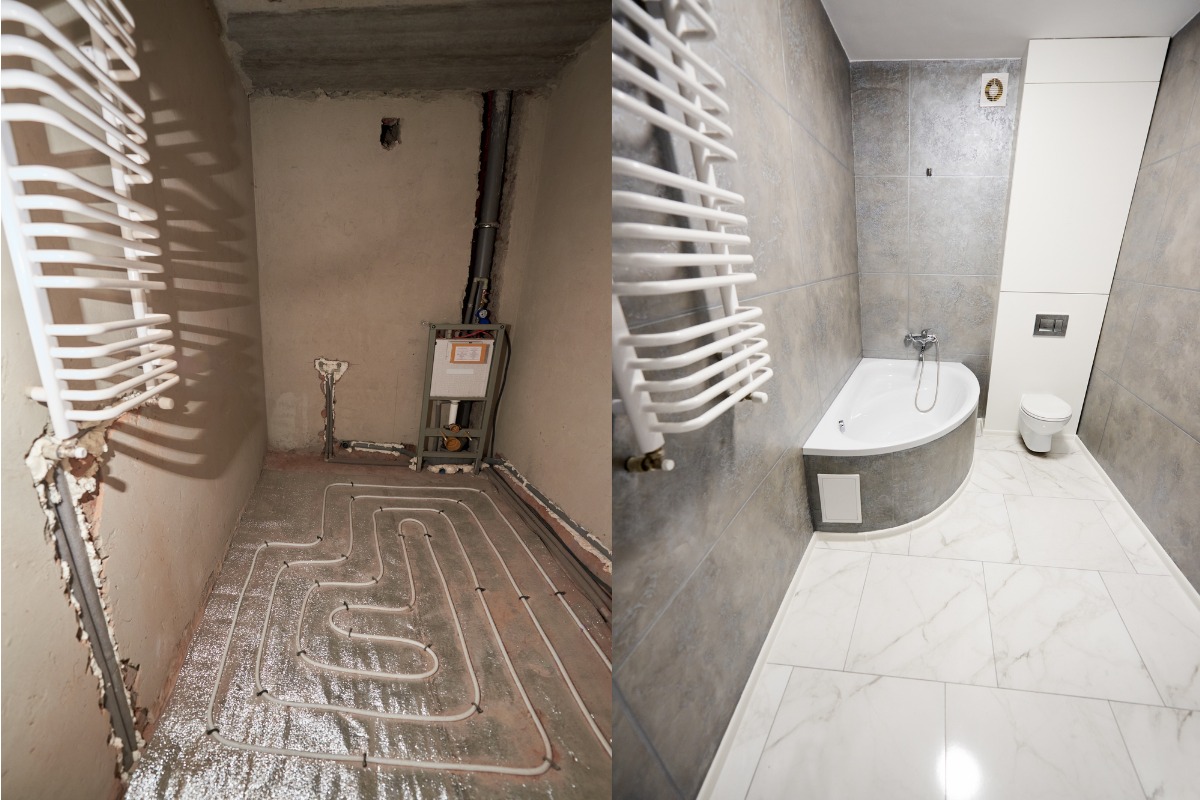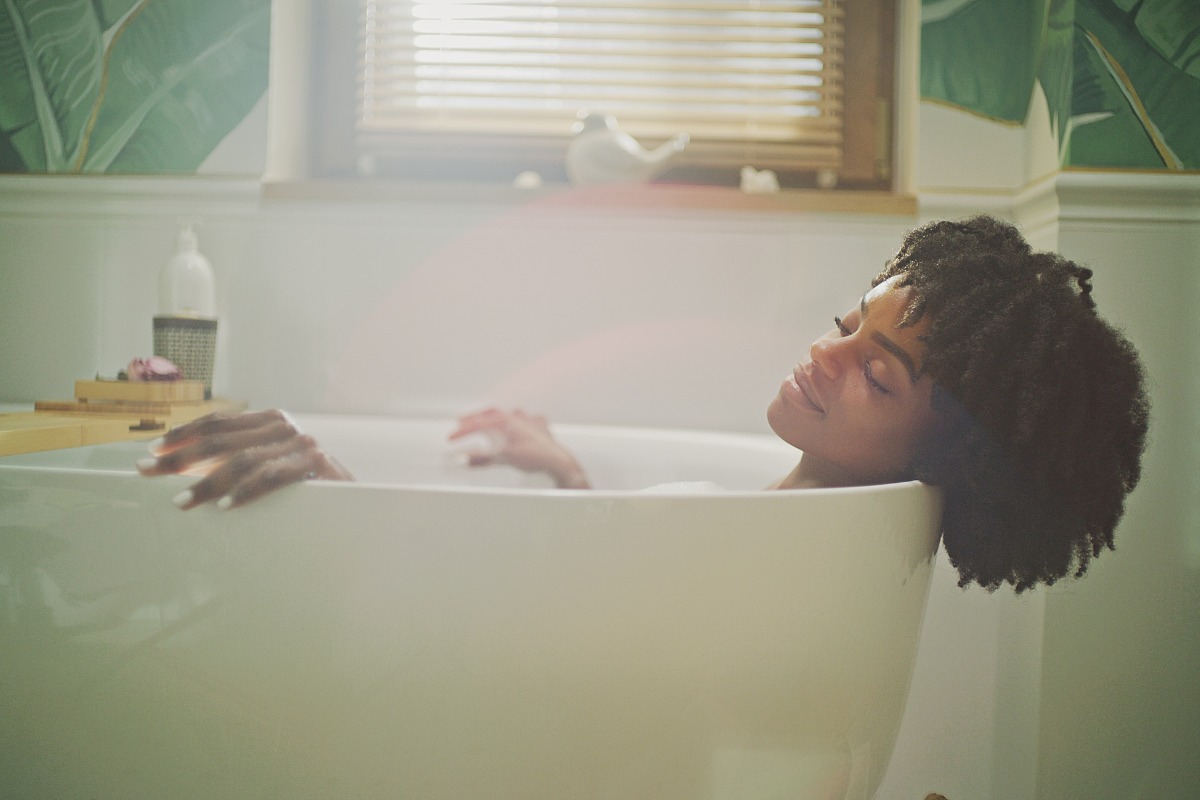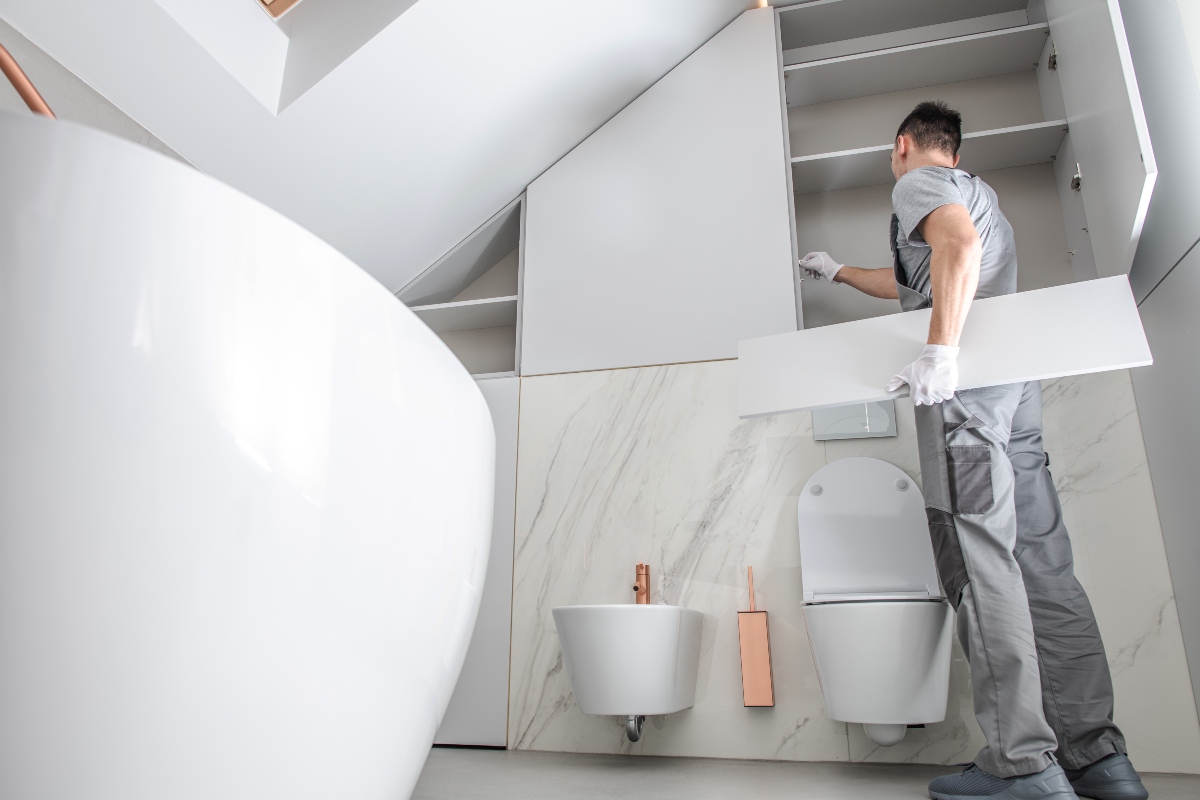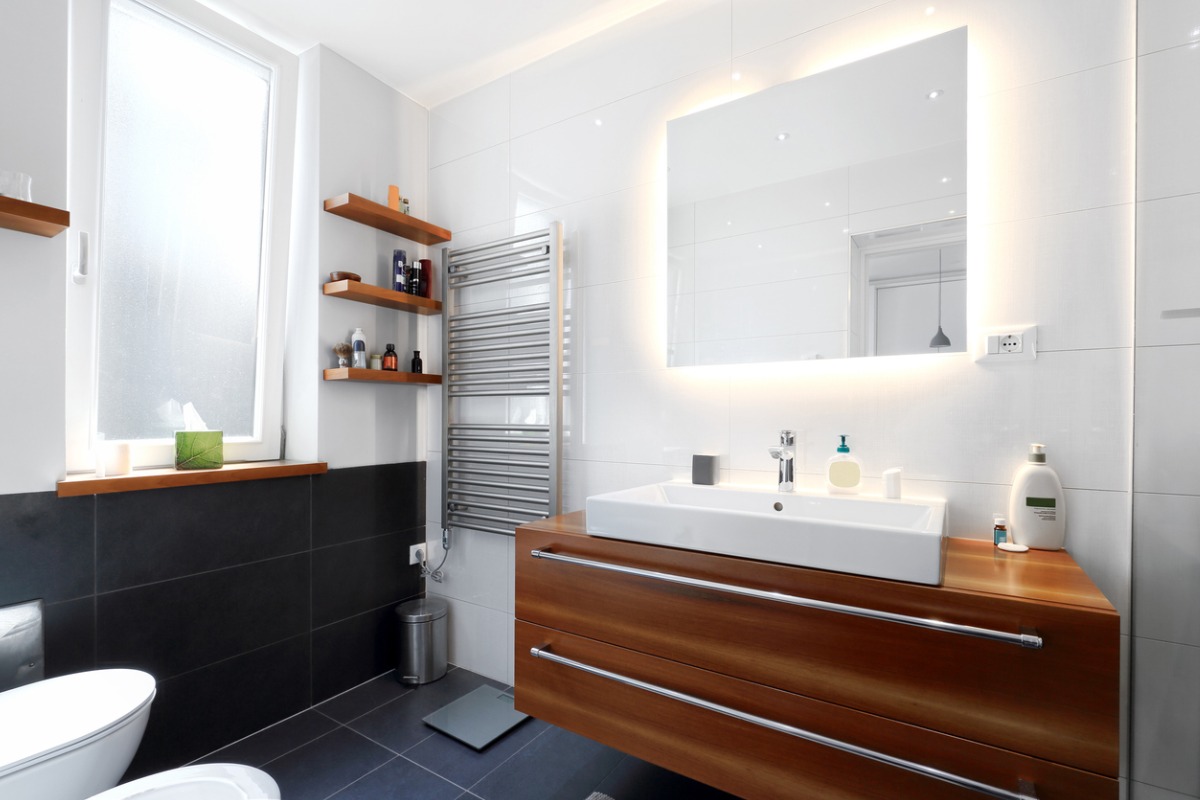If you are working with a small ensuite and trying to create a calm, functional space, it can be hard to choose between a wet room and a classic ensuite bathroom layout. Wet rooms look modern, feel open, and can be brilliant for...
When browsing property listings or planning a home renovation, you’ve probably come across the term ensuite. But what exactly is an ensuite, and why is it such a desirable feature in modern homes? Whether you're a homeowner, renter, or interior design enthusiast, this guide will explain everything you need to know about ensuites—from definitions and design ideas to benefits and costs.
What Does “Ensuite” Mean?
The word ensuite comes from the French term “en suite,” which means “in sequence” or “connected.” In home design, an ensuite refers to a bathroom that is directly attached to a bedroom, creating a private, self-contained space for personal use: en suite bathroom.
Unlike communal or guest bathrooms, an ensuite is accessible only from within the bedroom it serves. This layout offers a level of privacy and convenience that’s especially popular in master bedrooms and guest suites. In some smaller homes or flats, it may serve as the only bathroom in the property—still classed as an ensuite due to its direct bedroom access.

What’s Typically Included in an Ensuite?
An ensuite bathroom is designed to offer privacy and practicality without the need to leave your bedroom. While layouts can vary depending on space and budget, most ensuites share a set of core features.
Common Fixtures You’ll Find
At its most basic, an ensuite includes:- Toilet – A standard WC is essential for any bathroom setup. Many modern designs now feature wall hung toilets, which create a sleek look and save floor space.
- Sink or basin – Often paired with a mirror and a vanity unit or freestanding vanity unit underneath for added storage.
- Shower – A space-saving shower enclosure or walk-in design is common, especially in compact ensuites.
- Bath (optional) – While not essential, some larger ensuites include a full-sized or freestanding bath for added luxury.
- Storage solutions like mirrored cabinets, towel rails, and other bathroom accessories are also common to keep the space tidy and functional.

Compact vs. Luxurious Layouts
Not all ensuites are created equal. Their design often depends on available floor space and personal preferences:
- Compact ensuites make use of clever design solutions: wall-mounted fixtures, corner toilets, and sliding doors help maximise limited floor area. These are often found in guest rooms, city flats, or homes where the ensuite is not the only bathroom.
- Luxurious ensuites offer a more indulgent experience, featuring double sinks, walk-in shower rooms, freestanding vanity units, storage space units, statement lighting, and large shower enclosures. These are common in master bedrooms and high-end properties.
Regardless of size, the goal is to maintain comfort, efficiency, and a seamless flow from the bedroom (so you can enjoy a relaxing shower!)

Ventilation and Plumbing Considerations
Ventilation is a key component of a functional ensuite. Without proper airflow, moisture can lead to condensation, mould, and unpleasant odours—especially in bathrooms with no windows.
- Extractor fans are usually installed to manage humidity levels.
- Underfloor heating can also help dry out surfaces and add comfort.
- Plumbing access is another critical factor. Adding an ensuite to a location far from existing water and waste pipes can significantly increase installation costs.

Ensuite vs. Other Bathroom Types
Not all bathrooms are created equal—and understanding the different ensuite bathroom ideas and the difference between an ensuite and other common types can help you make informed decisions when buying, renting, or renovating.Ensuite vs. Private Bathroom
While the terms ensuite and private bathroom are often used interchangeably, there’s a subtle distinction:
- An ensuite bathroom is directly accessible from within the bedroom it serves—usually through an internal door. It’s designed exclusively for the occupants of that room and is not meant for general household use.
- A private bathroom may also be used by just one room’s occupants, but it isn’t always directly connected. For example, a bathroom just outside the bedroom in a hallway—used solely by guests staying in that room—might be labelled private, but it’s not technically an ensuite.
Bottom line: All ensuites are private bathrooms, but not all private bathrooms are true ensuites.
Ensuite vs. Shared/Family Bathroom
A shared or family bathroom is a general-use space accessible from common areas like hallways or landings. It’s designed to accommodate the needs of multiple people, often featuring a larger layout with a bath and shower combo, ample storage, and family-friendly fixtures.
- Key differences include:
- Accessibility – Shared bathrooms are open to all household members, while ensuites are limited to the bedroom’s occupants.
- Privacy – An ensuite offers a personal retreat, whereas a shared bathroom is communal by nature.
- Usage – Shared bathrooms may experience higher foot traffic and wear, especially in busy households with children or guests.
Jack-and-Jill Bathrooms
A Jack-and-Jill bathroom is a unique hybrid: it’s shared between two bedrooms, with separate doors providing access from each. These bathrooms often include double sinks to accommodate two users at once, and each bedroom typically has a locking door on its side for privacy.
While not an ensuite in the traditional sense, a Jack-and-Jill bathroom offers a semi-private solution—ideal for siblings, roommates, or shared guest accommodations.

What Are the Pros of Having an Ensuite?
Whether you're searching for your next home or planning a renovation, an ensuite can be one of the most appealing features a property has to offer. Here’s why:
Privacy and Convenience
One of the main reasons people love en suites is the unparalleled privacy they provide. You don’t have to share your bathroom with housemates, guests, or the rest of the family. It's a space that belongs entirely to you (or to the occupants of the room), which makes daily routines more comfortable and stress-free.
From midnight bathroom visits to morning showers, having an ensuite eliminates awkward hallway dashes or long waits when the main bathroom is in use. Everything you need is just a few steps away.
Increased Property Value
Adding an ensuite can be a smart investment. Properties with ensuite bathrooms—particularly in the master bedroom—often appeal more to buyers and can command higher resale values.
In competitive property markets, especially in cities or areas popular with families or professional couples, an ensuite can help your home stand out. It’s one of those features that ticks a big box for buyers looking for comfort, practicality, and a touch of luxury.
Ideal for Guest Rooms or Master Suites
Ensuites work especially well in:- Master bedrooms, where they provide a retreat-like feel and enhance the overall layout.
- Guest rooms, offering visitors added comfort and autonomy during their stay.
- Multigenerational homes, where an ensuite gives older family members or teenagers their own space.
This flexibility makes ensuites a versatile upgrade for both everyday living and occasional use. Whether you're accommodating guests or creating a private haven for yourself, the ensuite offers an elevated standard of living.

Potential Drawbacks
While ensuites offer privacy, comfort, and added value, they aren’t without their challenges. Before committing to one, whether you're buying a home or planning an upgrade, it’s important to consider the potential downsides.
Limited Space in Some Properties
Not all homes have the extra square footage to comfortably accommodate an ensuite. In smaller properties, squeezing in a second bathroom may result in:- A cramped bedroom layout.
- Reduced storage or living space
- Awkward room proportions that affect flow and usability
Even a compact ensuite requires careful planning to ensure it doesn’t compromise the comfort of the adjoining room. Creative solutions like wall hung toilets, pocket doors, or corner shower enclosures can help—but not every floorplan will allow for it.
Cost of Installation or Renovation
Adding an ensuite bathroom is a popular home improvement project in the UK, but it comes with a price tag that varies widely depending on the size and complexity of the job. Whether you're converting an existing space or starting from scratch, it's important to understand the typical costs involved.
Average Installation Cost Range
In the UK, the average cost of installing a new ensuite typically falls between £4,000 and £10,000. For a high-end, custom-designed ensuite with premium finishes, the total cost can exceed £15,000.
Here’s a rough breakdown of what that might include:
- Basic ensuite (toilet, sink, and shower): £4,000–£6,000
- Mid-range ensuite with upgraded finishes or a bath: £6,000–£8,500
- Luxury ensuite with custom tiling, walk-in shower, or freestanding tub: £9,000–£15,000+
These estimates include materials and labour, but not potential structural work.
Factors That Influence Cost
Several key factors can affect the final cost of your ensuite installation:
- Size and layout
- Plumbing and drainage access
- Fixtures and fittings (e.g., designer taps, high-end vanity units)
- Finishes and materials (e.g., tiling, waterproofing, bathroom accessories)
Labour and project complexity
Planning Permission and Building Regulations
In most cases, you won’t need planning permission to add an ensuite to an existing bedroom—especially if you’re not extending the home’s footprint. However, there are a few rules to keep in mind:
- Building Regulations must be followed for drainage, ventilation, and electrical safety.
- Loft conversions or significant structural changes may require additional approvals.
- Listed buildings or homes in conservation areas may have stricter requirements.
Noise and Odour Issues if Not Well-Ventilated
An ensuite bathroom is, by nature, attached directly to a bedroom—so ventilation and soundproofing are essential.
Without proper planning, you may encounter:
- Steam and condensation affecting the bedroom
- Persistent odours lingering near the sleeping area
- Disruptive noise from flushing toilets, fans, or running showers
Solutions like extractor fans, insulated walls, and quiet-flush toilets can help mitigate these issues, but they need to be factored into the design and budget from the start.
In summary, while ensuites are often seen as a luxury, they aren’t always practical for every home. Space constraints, installation costs, and ventilation challenges should be weighed carefully before deciding to add one.
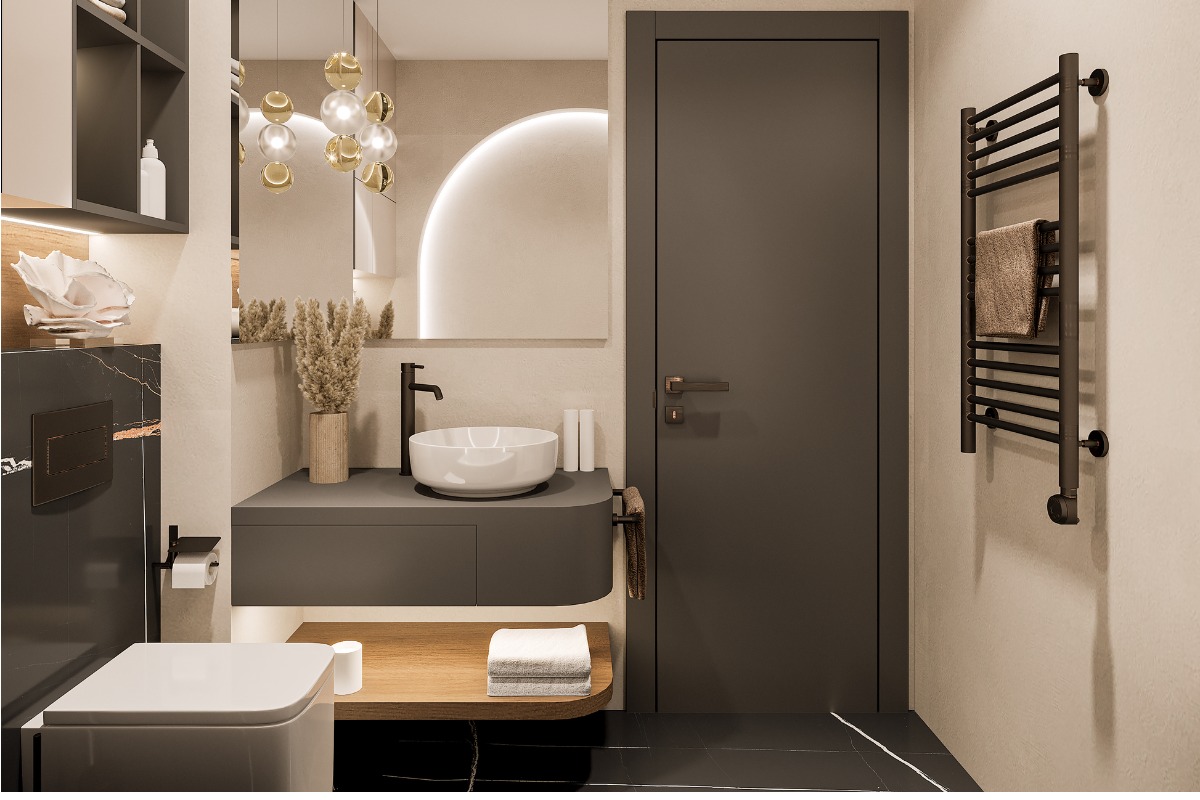
So, should you add an Ensuite?
Adding a new bathroom can be a brilliant upgrade—but is it the right move for your home? Before you commit to a renovation project, it’s worth weighing the practical considerations alongside the long-term benefits.
Start by assessing whether your property can comfortably accommodate an ensuite. Ask yourself:
- Do I have the available space?
- Can you borrow room from a large bedroom, extend outward, or repurpose an adjoining cupboard or storage area
- Is my budget realistic?
- Consider both the upfront installation cost and any additional expenses like finishes, fixtures, or structural changes.
- Is plumbing access feasible? Positioning your ensuite near existing plumbing (e.g., above or next to another bathroom) will reduce complexity and cost.
If the answer to most of these is “yes,” you’re likely in a strong position to proceed.
Final Thoughts
An ensuite isn’t just a stylish feature—it’s a practical one. From the morning rush to late-night routines, the ability to shower, get ready, or use the toilet without leaving your bedroom can streamline your day and reduce household friction.
In busy homes, especially those with small bathrooms or a single family shower room, an ensuite is a much-needed extension of comfort and privacy. Whether it's a guest room or the primary bedroom, having a connected bathroom—complete with a vanity unit, stylish toilet, and thoughtful storage—can transform an ordinary layout into a personal oasis.
For households with multiple occupants, en-suites help reduce traffic in shared spaces, making mornings feel less chaotic. And in older properties with a dark hallway or limited main bathroom access, creating an ensuite can enhance flow, light, and liveability, particularly when paired with tasteful fixtures from trusted suppliers like Victorian Plumbing.
While an ensuite won’t always guarantee a dramatic jump in property value, buyers often consider it an attractive feature. From small bathroom upgrades to full-scale renovations, a well-designed ensuite adds functionality, appeal, and modern comfort to your home.
The Conversion Guy - A Professional Bathroom Fitter serving Derbyshire & Staffordshire
Are you ready to take the plunge and transform your bathroom into an oasis? Well, look no further! The Conversion Guy is committed to providing you with a bathroom renovation experience that is unparalleled.
With over 40 years of experience in bathroom remodelling, we are looking forward to helping you create the most amazing bathroom of your dreams! We love talking bathrooms, so be sure to get in touch today or book a free consultation and start your journey towards creating the perfect bathroom retreat!
From the Learning Centre
Explore our resources and learn about pricing, bathroom refits, kitchen kitchen renovations, loft conversions and many other home improvements in our Learning Centre
